Mozambique: 'Franco' launches open call for 2026 performing arts projects
Mozambique: “We use theatre as a tool of struggle.”

FILE - For illustration purposes only. [File photo: Centro do Teatro do Oprimido de Maputo / Facebook
When theatre is used to heal internal wounds, restore trust and strengthen communities struggling against various forms of oppression, it reveals a transformative power.
This is precisely the work that the Theatre of the Oppressed Centre in Maputo has been doing. Recently, between September 1st and 5th, the centre completed a training program for displaced communities and victims of terrorism in Cabo Delgado province, with the support of the International Organization for Migration (IOM).
In an interview with RFI, Alvim Cossa, actor and general coordinator of the Centre for the Theatre of the Oppressed, highlights how theatre can be a powerful tool against different forms of oppression.
How did the idea of creating this training for displaced communities and victims of terrorism in Cabo Delgado province come about?
Alvim Cossa (AC): The Maputo Theatre of the Oppressed Centre has been working with the International Organization for Migration since 2018, after attacks by armed men began in Cabo Delgado province in 2017. Since then, we have been using Theatre of the Oppressed techniques in a project we call Healing Through Art. The project covers districts severely affected by the conflict, which host many of the displaced people.
Is this training intended only for those displaced by the conflict in Cabo Delgado?
AC: Yes, we work with displaced people. But we also work with host communities because, in some of the places where displaced people arrive, there are small conflicts based on tribe, race, and language. And we use Theatre of the Oppressed to create an environment of tolerance, a place of socialization, and tranquillity between the displaced and the host communities. We work with both groups, but we also include members of the Defence and Security Forces, such as the police and the army, in our training.
How do you organize this training?
AC: In Theatre of the Oppressed, we train as jokers, debate facilitators, and community dialogue facilitators. As for the selection of participants, we go to reception camps and communities and, with the help of local authorities, identify those who have a desire to work in the arts—especially in theatre, dance, music and poetry. These are the people who undergo Theatre of the Oppressed training. The selection is based on people’s willingness and commitment to working with the arts as a tool.
How can art be used as a social tool and enable community strengthening?
AC: The Theatre of the Oppressed is extremely powerful because it is a tool that calls us to introspective reflection on our life journey, on what we are doing, and the various types of oppression that plague us in our daily lives, providing a space for interaction with others.
Theatre opens the possibility for others to look at our history and contribute to it. We allow people to look at each other, to observe practices and share good practices, but also to share how to correct bad practices. It has been very useful in peace-making and dialogue. It has been very useful in building self-confidence and restoring hope to people who have experienced situations of horror or terror and have lost hope. Often, these people present with psychiatric problems, and theatre also helps identify these individuals, referring them to specialized care from doctors, psychologists, and psychiatrists. The dialogue we promote allows people to open up and share the things that eat away at them.
From this training, which concluded on September 5th, do you have any stories you can share?
AC: We have the story of a 16-year-old girl who saw her parents’ throats slit and was abused while fleeing the attack zone to a safe zone. According to the explanations we received, this girl lived in isolation, didn’t talk to people, or opened up to anyone. By participating in the Theatre of the Oppressed training, with a series of games and theatrical exercises, she began to open up more, and on the last day, she began to talk—even laugh—and tell her story. In fact, this girl’s story was used in one of the plays created during the training. I won’t say “happy ending,” but we managed to rescue a 16-year-old girl who seems to be coming back to life, dreaming and having hope again.
Does art allow / enable this return to life?
AC: I believe we have no better tool than art to heal inner wounds, to bring a balm to the spirit, allowing people to truly find themselves again. What we’ve been saying—along with our partners—is that someone who has experienced physical or psychological trauma, who has witnessed moments of horror, can receive food, can receive clothing, can receive a tent to live in. They will eat, they will get dressed, and they will sit in front of the tent… and cry. Because there are things that material goods can’t heal, but art can fill people’s souls and bring that feeling of peace, of joy, but, above all, it can restore the human side of being.
Does it restore dignity?
AC: Exactly. So, art does things that other fields try to do—and fail.
In addition to community participation, this training also included other participants: the Republic Police, technicians from the District Education and Health Services, and Women, Gender, and Children’s Services. What is the purpose of involving other participants in this training?
AC: The main objective is to achieve consistency in approach and language, because we create plays that address, for example, child exploitation, gender-based violence, protection, and mental health. And we, as a theatre group, recognize that we are not complete in terms of knowledge. People from other institutions help us achieve consistency in approach and language, but they also help us avoid alienating people.
Sometimes, as artists, we are tempted to see the performance aspect of creation, but they help us appreciate human sensitivity and understand how to correctly address, even artistically, issues that are profound and affect people’s lives. So, these people are very useful for that.
However, regarding the police, for example, there is a fear among communities—especially displaced communities—of seeing people in police and Armed Forces uniforms. It creates situations of trauma, of fear, and when they are part of the training process, we exercise together, hug, run together, interact, perform—and this performance restores a sense of: “although armed, he’s a human being, he thinks and feels like me”.
Does it restore confidence?
AC: Yes, it restores confidence!
What is your assessment of this training? Do you think this initiative should be repeated in a society that is so polarized? You mentioned the conflict in Cabo Delgado, but we also had episodes of violence in the country after the election results..
AC: I believe so, because the Theatre of the Oppressed opens spaces for dialogue, opens spaces for interaction, opens spaces for us to reflect and seek answers together, not separately. Unfortunately, the world is filled with monologues. The Theatre of the Oppressed seeks to bring dialogue. What’s missing in our current society is dialogue. What’s missing is reorganizing our society, rethinking things from the perspective of peace and the joy of others as well.
So, we are working, without a contract, in several provinces across the country – not only in situations of armed conflict, such as Cabo Delgado, Niassa, and Nampula – but also with groups of women victims of domestic violence. We work with groups of people living with HIV/AIDS, who are discriminated against, mistreated, and pushed to unacceptable levels of vulnerability. We work with all oppressed groups to seek their dignity.
We also work with groups in areas experiencing land conflicts. In Mozambique, we have a major problem linked to the extractive industry, but also to industrialized agriculture, such as the threat of eucalyptus production, which is driving entire communities to open monoculture farms, which will create food problems for the communities in the coming years. And we use theatre as a tool for these communities to fight for their dignity, for their rights, but above all, for respect for life.
And also to build bridges?
AC: To build bridges, create spaces for dialogue. It’s about training communities in strategies for dialogue and confronting the various types of oppression we encounter in our daily lives.


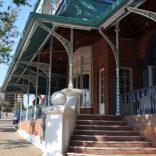
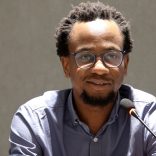

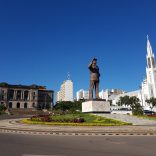


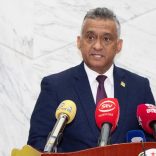

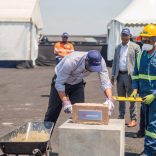
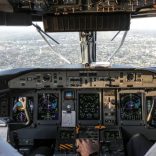
Leave a Reply
Be the First to Comment!
You must be logged in to post a comment.
You must be logged in to post a comment.